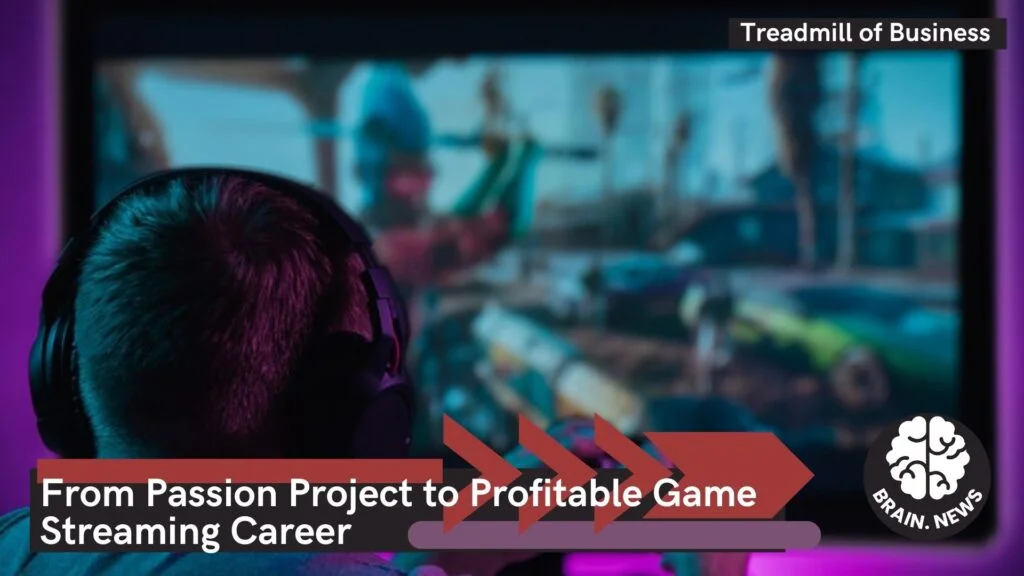Retail empires initiate from one retail outlet while pursuing a courageous vision alongside persistent success goals. From One Store to a Global Brand, Tremendous lifestyle brands recognized today along with electronic and home product brands all rooted from basic business operations at their start. The process of transforming one retail location into an international power requires which key elements? This article follows the remarkable growth of retail corporations achieving global success after their initial small beginnings. The article explores their first obstacles followed by their strategies to grow while examining the disruptions and innovative measures that kept them competitive in market shifts. Companies achieved retail marketplace change through strategies that included technology implementation and supply chain management and market trend adaptation.
Every success story for these businesses involved overcoming financial problems alongside competitive forces and strategic moves which propelled their growth path despite numerous obstacles.Finding the key ingredients of building lasting influential brands requires studying the real-life experiences of established companies in the market.These companies achieved expansion by blending innovation with resilience and in-depth research of consumer habits which led them to set industry standards.These pathways demonstrate the path for future business owners who wish to transform their retail business dreams into successful realities.
From One Store to a Global Brand: The Humble Beginnings of Retail Giants

The existence of massive retail operations within the marketplace derives from small businesses that offered quality service to their community through direct marketing before embarking on market expansion through calculated strategies. The enterprises deployed technological progress at changing times before focusing on delivery optimization until they adopted franchising systems and digital commerce to increase their operations. The brands successfully adapted modern consumer needs and economic conditions which took them from being popular local brands to become global retail leaders that guide today’s retail marketplace.
The flexible operational structures of different success-driven organizations generate market-moving capabilities that produce significant effects on constantly changing market environments. The firms dedicated their resources to developing data management systems and omnichannel retail structures and strengthening customer relationships to satisfy evolving consumer demands under aggressive market conditions. The company developed its worldwide network through strategic partnerships and acquisitions as well as international market expansion strategies. The company used innovation-centric strategies to uphold its fundamental values thus becoming the market-leading brand which defines retail innovations alongside global shopping patterns.
- Walmart – Started as a single discount store in Arkansas in 1962, now a global retail leader.
- Since Nike introduced its footwear distributorship in 1964 the company has grown into a worldwide dominant sportswear retail corporation that operates throughout present time.
- Zara – Opened its first store in Spain in 1975, now one of the largest fast-fashion brands.
- Since 1994 Amazon established itself as the leader of e-commerce evolution after launching its virtual bookstore.
Business strategies link critical leadership and business agility to highly focused customer satisfaction.
Expansion Through Franchising and Store Growth

Retail giants expand their business operations by placing new sites in areas where customers show high demand and the economy is advancing among sparsely populated competitive spaces. Market research conducted by the organization spans over time to find prime expansion sites that incorporate factors including less dense residential areas along with assessment of financial resident demographics as well as regional retail competition data. These stores permit Traders to assess market potential to decide whether they should open larger locations. The structured procedure allows successful business management to raise brand visibility and customer accessibility throughout various market locations.
Major retail businesses minimize their financial risks by merging company-run stores with franchise operations to grow at a fast pace.By using franchising they acquire access to community market expertise while preserving operational cost management that allows swift business expansion throughout extensive markets.The company leverages modern analytic tools to track buyer trends and preferences and thus optimizes their store network layout and decides their ideal locations.
Leveraging Technology and E-Commerce

Companies use data analytics functions and artificial intelligence systems and modern technology platforms to expand internationally and enhance operational performance along with sales efficiencies and customer engagement. Digital innovation enables businesses to overcome physical stores through worldwide customer engagement for industry battles which transform retail dynamics.
Users can experience different interactive product experiences because mixed-use technology includes both augmented reality and virtual reality features which merge digital stores with physical locations.The primary reason businesses use Instagram TikTok and Facebook platforms lies in their ability to interact with customers through interactive content because such content is supported by influencer endorsements which results in sales growth.
Conclusion

Companies need visionary leadership along with strategic planning and flexible business operations to move from their initial store to worldwide retail leadership status. Success in scaling up a business requires strong network infrastructure systems with streamlined supply routes along with digital capabilities and market-specific customer adjustments. The retail companies demonstrate to upcoming entrepreneurs the development requirements for their own retail business sector creation. Large companies showed their methods for resolving business issues by teaching their business structures that analyzed proper extended-term development processes present in entrepreneurship. Retail organizations achieve success in uncertain markets through three critical components which consist of keeping customers happy while maintaining retention and introducing innovative solutions built for economic change resiliency. The correct development foundation and continuous performance enhancement enable companies to build world-leading market status.
The process of business leader expansion across the Pacific requires perpetual solutions for multiple obstacles throughout all stages of growth.To reach long-lasting business success business owners must maintain adaptive practices while implementing time-appropriate market tracking technology for their strategic planning efforts.Modern market evolution requires businesses to develop new capabilities that help them respond to current retail market developments and changing customer demands for retail success.Worldwide brand recognition depends on comprehensive market exploration along with maintaining high quality standards while having innovative leadership which delivers superior operations.The combination of these critical elements by organizations generates industry achievement and growth opportunities to support the developing international market.



